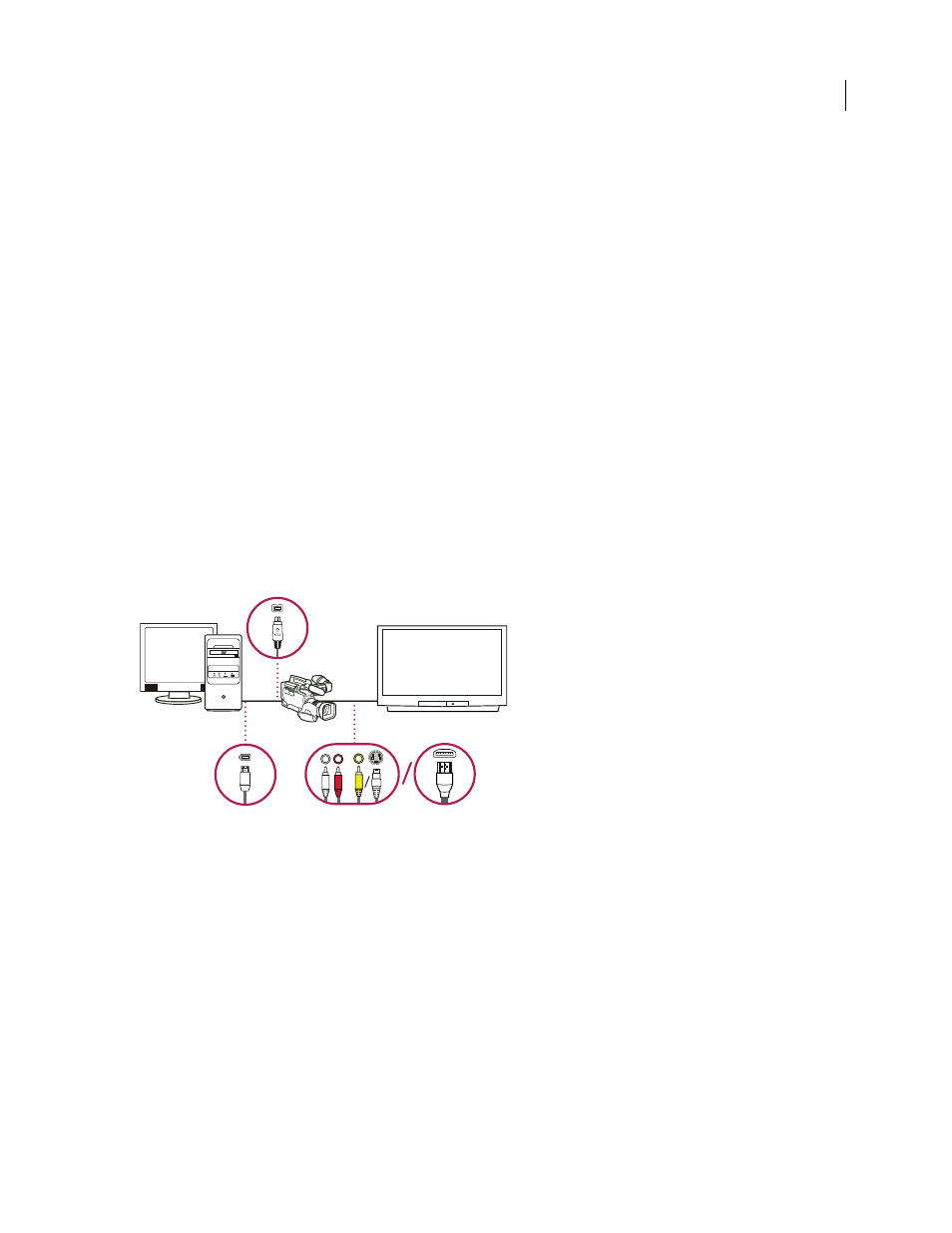Chapter 4: setting up, and bringing in assets, Setting up your system, About setting up your system – Adobe Premiere Pro CS3 User Manual
Page 53: Set up a dv or hdv system

47
Chapter 4: Setting up, and bringing in
assets
With your hardware hooked up, you can bring assets into a project by capturing them from digital sources,
digitizing them from analog sources, or importing them as computer files.
Setting up your system
About setting up your system
To use the full range of features in Adobe Premiere Pro CS3, you’ll probably need to connect additional equipment
to your computer. Most editing workflows, for example, require connections with a camcorder or VTR, a television
monitor, and sometimes a device controller. These devices make it possible to log and capture footage, to recapture
it at different resolutions, to monitor picture quality and framing throughout the editing process, and finally, to
export the finished movie to tape for mastering.
Set up a DV or HDV system
DV/HDV setup
A. Computer and computer monitor B. 6-pin FireWire port and connector C. 4-pin FireWire port and connector D. DV/HDV camcorder
E. RCA jacks and plugs for L (white) audio, R (red) audio, composite video (yellow); jack and plug for S-video (y/c) F. HDMI port and
connector
G. Television monitor
With this setup you can capture audio and video from a DV or HDV source, monitor the signal on a TV monitor
while editing, and export any sequence back to videotape.
1
Connect the DV or HDV camcorder or VTR to the computer using a FireWire cable.
2
Connect the camcorder or VTR to the television monitor with an S-video or RCA video cable and RCA audio
cables, or an HDMI cable.
3
Put the camcorder or VTR into VTR or Play mode.
4
(For HDV camcorders or VTRs only) Make sure the device is in DV playback mode for DV projects, or HDV
playback mode for HDV projects. See the user’s manual for your device for details.
C
B
A
D
G
F
E
April 1, 2008
